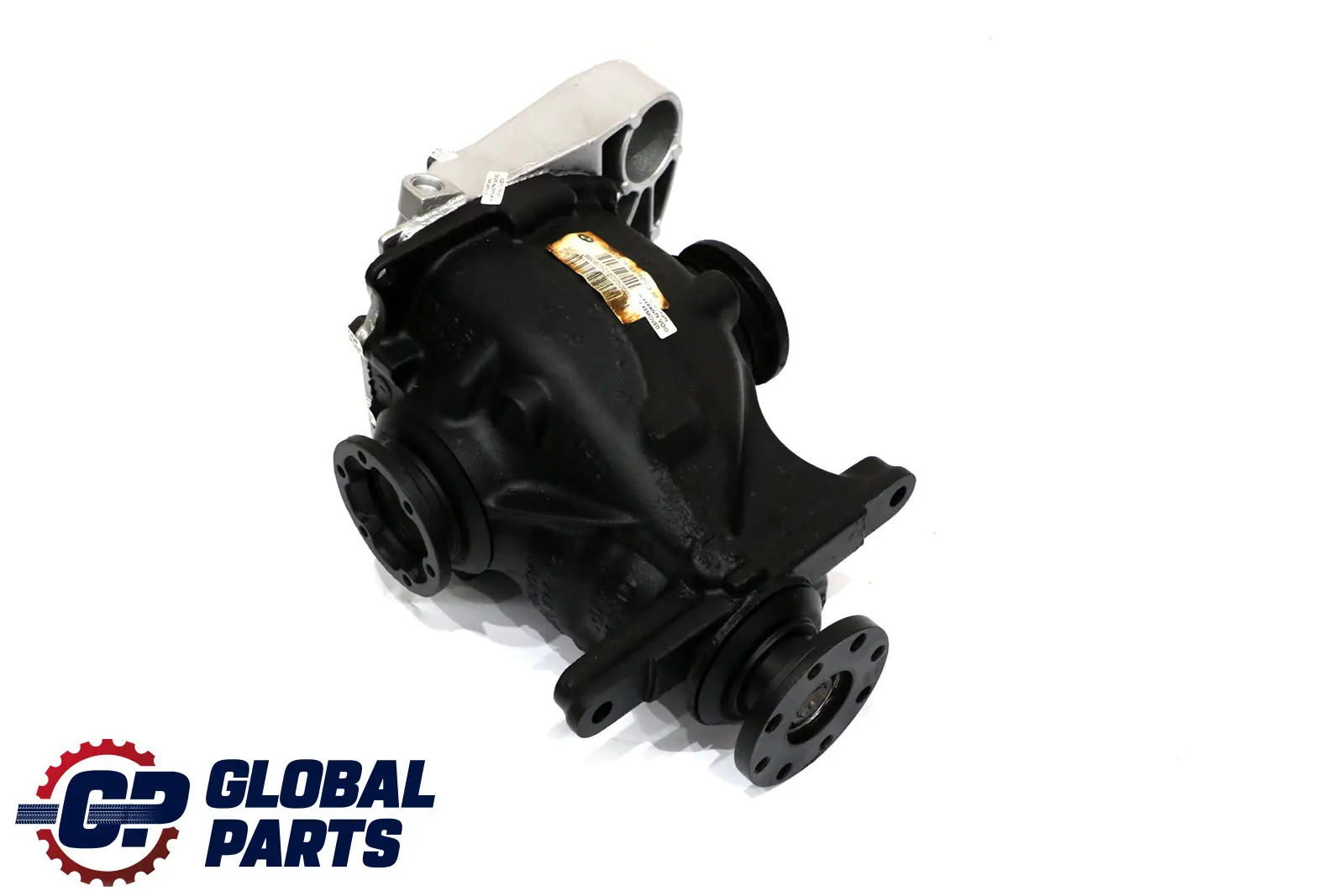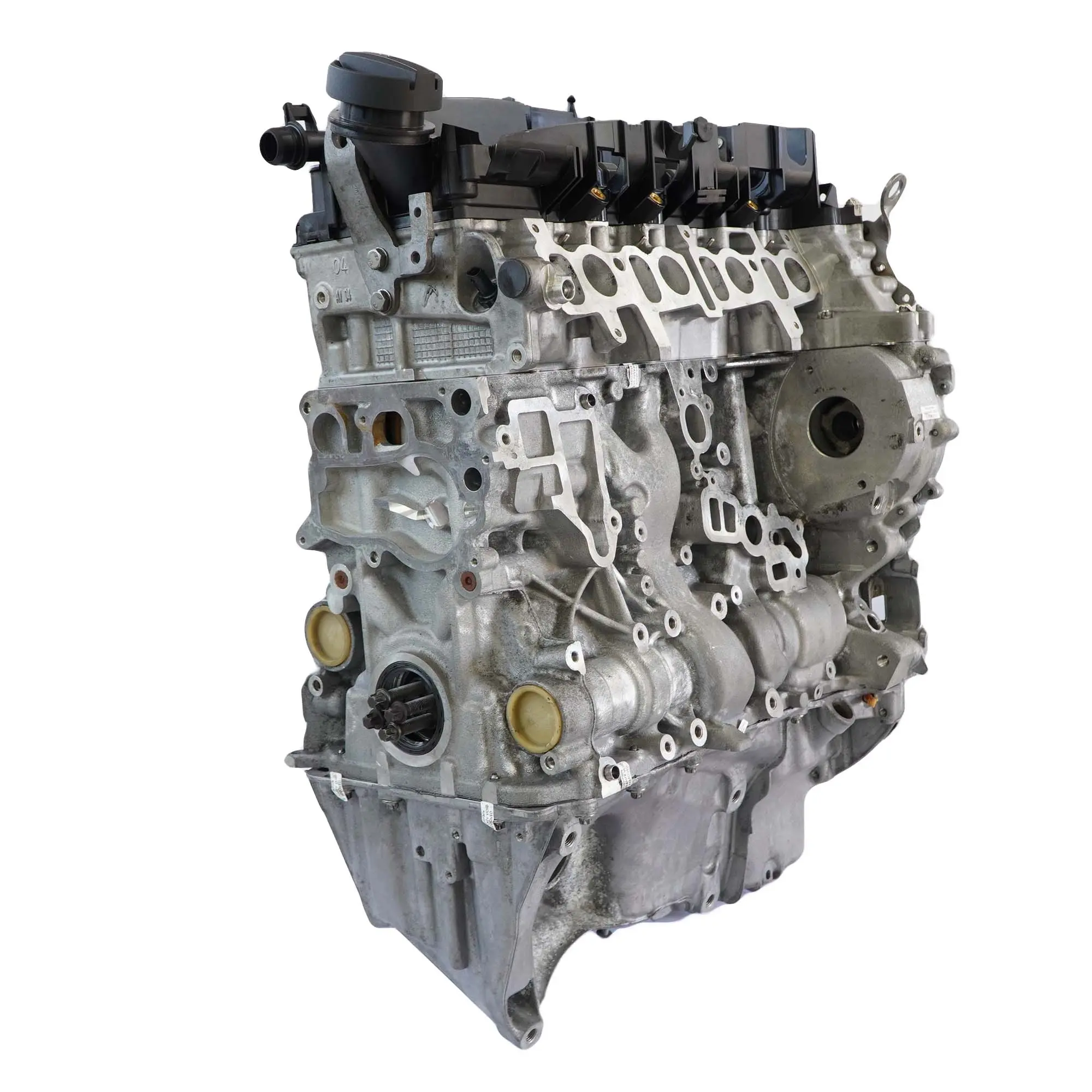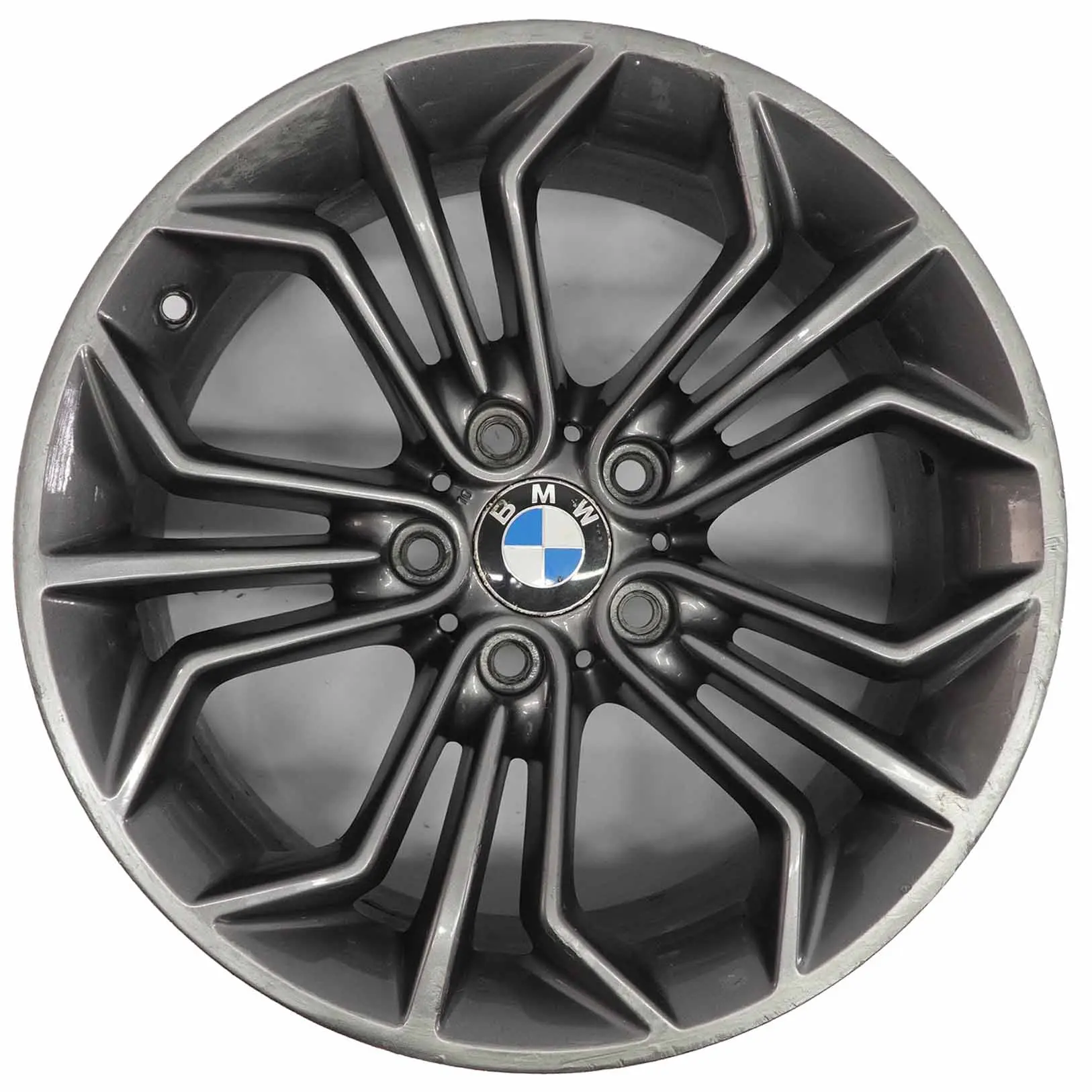The Audi five-cylinder engine – a legend from Quattro to RS3 and how to care for it with genuine Audi parts
The Audi five-cylinder engine combines a unique sound with smooth torque delivery, which is why it has long been associated with rally efficiency and everyday flexibility. The history from the Ur-quattro to the modern Audi RS3 shows that the "R5" can be both a legend and the practical heart of a car for everyday driving. In real life, the use of original Audi parts (OEM) provides an advantage, especially when these are used components matched by VIN/OEM and from the same model year family. This choice shortens assembly time, lowers the overall cost, and maintains the factory geometry and pinology of the accessories. This post explains what the Audi five-cylinder engine is, which models it is found in, and how to properly care for it with original used parts. Global Parts advisors can subtly help you verify compatibility and availability to ensure that the Audi engine and Audi quattro drive operate as intended by the manufacturer.
Audi engine – the definition of a five-cylinder and what its "smoothness" is
Most important fact: Audi's five-cylinder engine (R5) has ignitions every 144° of crankshaft rotation, so it generates a smooth torque curve and a characteristic "pulse." This kinematics explains why the R5 reacts naturally in the mid-range and "pulls" without nervousness from ~2000 rpm. Older designs featured cast iron blocks and a 2.1-2.2 turbocharger, while modern engines (2.5 TFSI) use lightweight blocks and direct injection. In every version, the Audi five-cylinder engine readily cooperates with a turbocharger and intercooler, which improves the IAT during dynamic driving. Additionally, the R5 copes well with constant load in conjunction with the Audi quattro, because the traction allows for the use of torque without wheel spin. Practical conclusion: this configuration is mechanically logical, acoustically unique, and extremely useful in everyday traffic.
Audi engine – sound, ignition rhythm and impact on work culture
The starting point: the rhythm of the 5 cylinders creates an uneven but "musical" exhaust sequence that drivers recognize from afar. In practice, this translates into subjectively light acceleration and a lack of "gaps" between the boost and mechanical elasticity. In the newer 2.5 TFSI engines, the manifold and turbine are optimized for efficient flow, which maintains consistent power at the correct IAT temperature. In the older R5 turbo, healthy oil and air cooling is crucial to avoid "heat soak" after short, intense driving. Conclusion: it's not just the sound – it's also consistent dynamics and mechanical comfort. 
Audi engine – models from quattro to RS3 and how to "read" their markings
Introduction: the legend began with the Audi quattro / Ur-quattro, and today its heir is the Audi RS3 and TT RS with 2.5 TFSI. Development: in the "daily" segment , the Audi A4 B6 engine and the Audi A5 engine (Audi A5 8t what engine) show that the market is looking for a fit for purpose – economy, flexibility or moderate tuning. In the premium-GT Audi S8 Quattro V10 It's a reminder that the quattro tradition also extended to the V10, albeit with a different operating philosophy than the R5. In the world of compacts, the Audi TT Quattro 8n reflects the easy-to-use 1.8T ecosystem, but the selection of components and cooling is still governed by VIN/OEM rules. At the intersection of sport and practicality, the Audi RS3 combines a powerful midrange, fast gearboxes, and quattro traction—it's today's "mainstream" five-cylinder. Summary: Regardless of the family, the parts selection process is identical—platform, year, VIN/OEM, and only then any mods or add-ons.
Audi engine – a summary of the models and what to check when selecting them
Thesis: the newer the generation, the more important the small parts and ECU version. In the Ur-quattro/RS2, the manifolds and cooling nodes matter, in the TT RS/RS3 – the ECU generation, harnesses, and IAT cooling. In the A4 B6 and A5 8T Differences in intake hardware and emissions standards are important, and in the A3 8P – even something as mundane as the Audi A3 8P engine cover, which affects the durability of the hoses and connectors. In the S8 V10, oil and fuel circulation for long highway runs and temperature requirements are crucial. Bottom line: VIN/OEM at the start saves time and prevents surprises during installation.
Audi Engine – Why a Used OEM Shortens Installation and Lowers TCO
The main point: a used Audi engine in the OEM version retains its geometry, ports, and pinout, so assembly is usually shorter and requires fewer adjustments. In older model years, the availability of new indexes can be limited, so a post/long-block assembly from disassembly restores mobility faster than a complete overhaul. Savings are often 40-70% compared to a new set, and time savings mean no modifications or additional trips to the warehouse. It's important to combine a used carrier with new consumables: gaskets, disposable bolts, hoses, and fluids – this minimizes the risk of accidental leaks. After the first drive, it's worth logging IAT/ECT, fuel trims, and boost pressure to confirm a return to "factory" performance. This is a set of practices that works well in both classic Quattros and the modern RS3.
Audi Engine – When Using It Makes the Most Sense (Situation Overview)
Version 1: A quick return to the road after a mechanical failure – the OEM part reduces the time and risk of fittings. Version 2: Older generations, where the new index is extinguished – a used one provides physically available parts, not "paper" references. Version 3: Cars with a moderate modification plan – the original carrier maintains compatibility, and new ones with better specifications can be selected for operational use. Version 4: Projects where authenticity counts – original Audi parts support sentimental and collectible value. Conclusion: a used OEM combines price, time, and risk in the most predictable triangle.
Audi engine – selecting a used unit by VIN/OEM (steps and small parts)
Introduction: Effective selection begins with filtering, and only then turns into purchasing. Step 1 is the VIN and OEM index – they check compatibility with the platform, year, and ECU family. Step 2 is a "dry" fitting of the accessories: connector by connector, port by port, to detect differences of 2-3 mm, which take time. Step 3 is planning new consumables (gaskets, bolts, filters, fluids), as they often determine durability. Step 4 is checking the auxiliary components – in a "daily" car, an engine cover, and in an "RS" a better intercooler from the OEM family. Step 5 is the schedule: start-up, logs, test drive, leak check after 200-500 km.
Audi Engine – What to Add to Cart Before It Leaves the Warehouse
The foundation: a set of gaskets and bolts, a short fuel line, manifold O-rings, intake/water clamps, and an oil/fuel filter. Supplementary items: temperature/pressure sensors, if the year or emissions standards differ. Optional: an intercooler or cooling system flush kit, if the car has experienced heat soak symptoms. In an everyday A4/A5/A3, an underbody cover is appreciated, as it reduces flooding of wiring harnesses and connectors. Practical: gathering small parts in advance shortens the car's time on the lift by hours.
Audi engine – operation and quattro drive: how to maintain parameters
Introduction: R5 and more powerful configurations prefer stable temperatures and clean fluids. Further reading: with quattro, the engine is more likely to operate under prolonged load, so oil changes in line with actual driving habits, not just the calendar, are crucial. On hot days, it's worth keeping an eye on the IAT – a dirty intercooler and thick dust under the bumper can impair consistency. After a short, "hard" session, idling can help – 1-2 minutes can make a big difference in the lifespan of turbo bearings. In city cars, it's a good idea to balance short trips with a longer route to burn off condensation and carbon deposits. Final advice: with quattro and RS3, it's better to schedule preventative maintenance than to "put out the fire" after the fact.
Audi engine – symptoms worth taking seriously
Idle fluctuations and low-end jerking indicate problems with the fuel injection or airflow. Rough acceleration after warming up can be caused by an increase in IAT or an intake leak. A loss of power during highway driving can indicate a dirty intercooler/cooling system or fuel injection. Disturbing cold knock requires urgent diagnostics – sometimes it's a minor issue with the engine, sometimes it's a mechanical issue. Most importantly, collect logs (IAT/ECT, corrections, boost pressure), because facts shorten the path to a sound decision. 
Audi engine – most frequently searched configurations and checkpoints (shortcut)
| Model / family | Sample unit | Drive | Note on selection |
|---|---|---|---|
| Audi quattro / Ur-quattro | R5 2.1–2.2 turbo | quattro | collectors/IC by year, sensor compatibility |
| Audi RS2 / TT RS / RS3 | R5 2.5 TFSI | quattro | ECU generations and connectors, IAT cooling |
| Audi A4 B6 (8E) | R4 1.8T / R4 TDI / V6 | FWD/quattro | VIN/OEM; intake hardware and year harnesses |
| Audi A5 8T | R4 TFSI / V6 TDI | FWD/quattro | goal: economy vs. flexibility; injection/DPF |
| Audi A3 8P | R4 TFSI / TDI | FWD/quattro | Audi A3 8p engine cover – cable protection |
| Audi TT 8N | R4 1.8T | quattro | Water cooler/system; simple integration |
| Audi S8 (D3) | V10 5.2 | quattro | oil and fuel cooling, ECU requirements |
Audi engine – used post installation procedure (workshop checklist)
| Step | What to do | Goal / parameter |
|---|---|---|
| 1 | VIN/OEM verification | identical equipment family |
| 2 | Dry fitting of equipment | connector by connector, nozzle by nozzle |
| 3 | New operational | gaskets/bolts/fluids/filters |
| 4 | First start-up | no leaks, log IAT/ECT/corrections |
| 5 | Test drive | stable boost, no throttling |
| 6 | Check after 200–500 km | re-log, leak verification |
FAQ – Audi five-cylinder engine, quattro and choosing a used one (Q&A)
| Question | Short answer |
|---|---|
| What is a five-cylinder engine and how is it different from the R4/R6? | Five cylinders in series, firing every 144°, smooth torque and a unique sound. |
| What does quattro mean and why is it important for the R5? | Audi's permanent 4×4 drive transfers torque better and stabilizes the car in the RS3/TT RS. |
| How to choose an engine for an Audi A4 B6 or A5 8T? | VIN/OEM, year and equipment compatibility; then minor assembly work. |
| Is a used Audi engine a good idea? | Yes, when it is OEM selected by VIN – assembly is faster and predictable. |
| Why an Audi A3 8p engine cover? | Protects the lower part of the unit and the wiring; reduces corrosion and dirt ingress. |
| What logs should I check after installation? | IAT/ECT, fuel trims, boost pressure and intake tightness. |
| Does every version of the RS3 have an identical R5? | No – the generations differ in ECU and hardware; the decision is made based on the VIN/OEM. |


